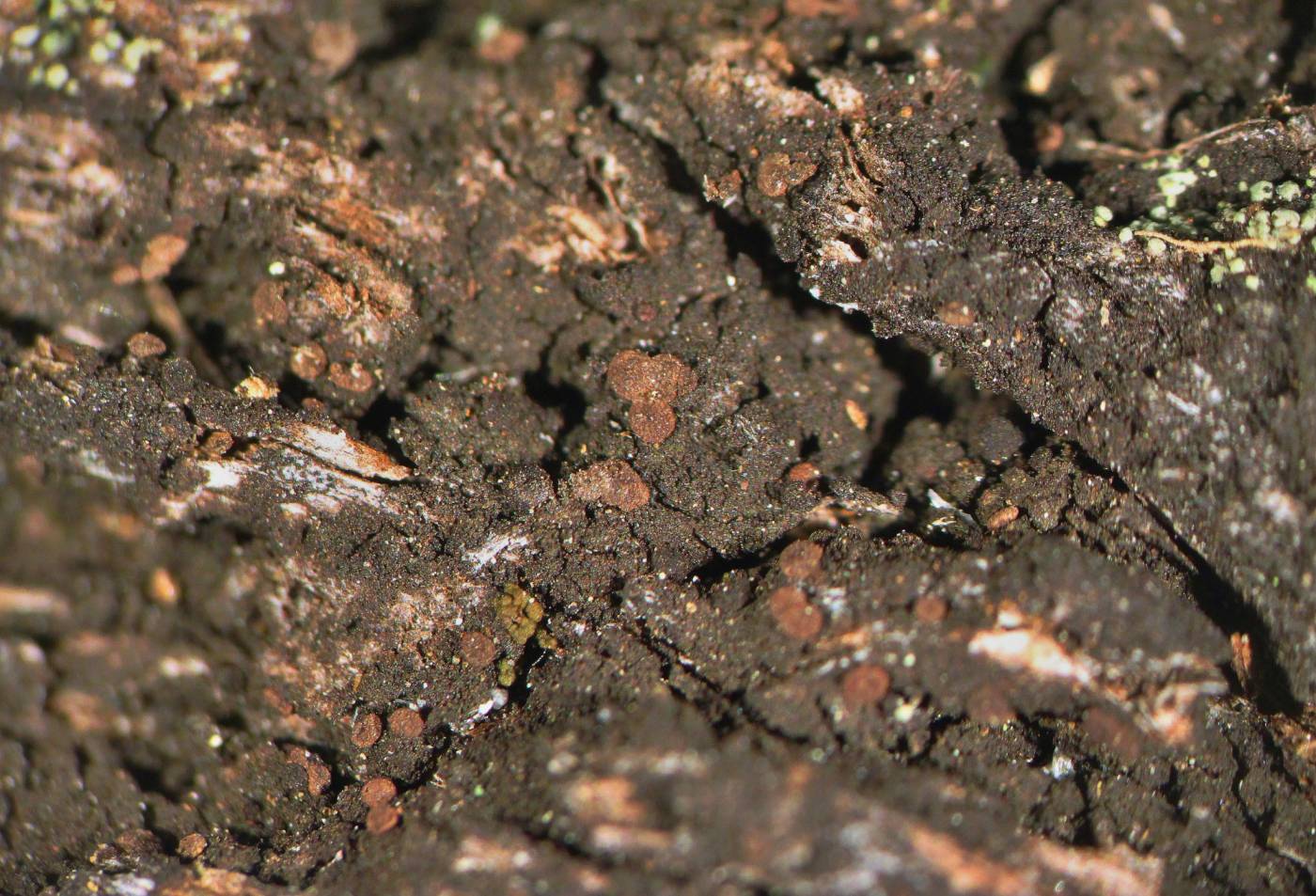This mostly fertile species, similar to P. oligotropha, it is a locally abundant pioneer lichen (r-strategist), much rarer than the related P. icmalea. When wet, P. uliginosa forms a gelatinous thallus without visible areoles or isidia. When dry, the thallus is composed of scattered, spherical, tiny dark granules (goniocysts), less than 0.1 mm large.
It grows on occasionally disturbed acidic substrates, such as sandy, clayey or peaty soil, raw humus, and even decaying wood. It is commonly found in peatbogs, heathlands, forest openings, river alluvia, sand quarries, etc. It tolerates moderate stumping and may occur on tourist paths or road edges. In the catalogue by Vězda & Liška (1999), it is the most frequently recorded Placynthiella species, however, probably only a part of the records actually belongs to the species. The rest of the records probably refer to other species that were not distinguished in the past, or only at the level of forms, which are not specified in the catalogue.
taxonomic classification:Ascomycota → Lecanoromycetes → Trapeliales → Trapeliaceae → Placynthiella
Red List (Liška & Palice 2010):LC – least concern
Occurrence in the Czech Republic
All records: 227, confirmed 169. One click on a selected square displays particular record(s), including their source(s).

